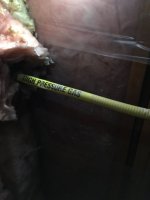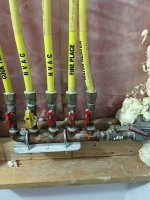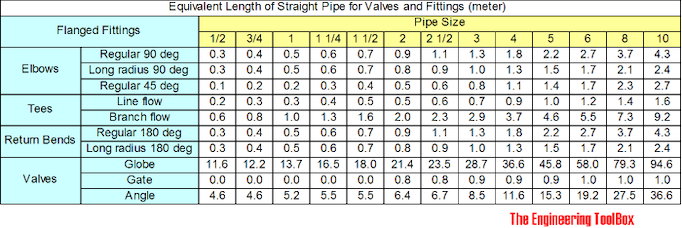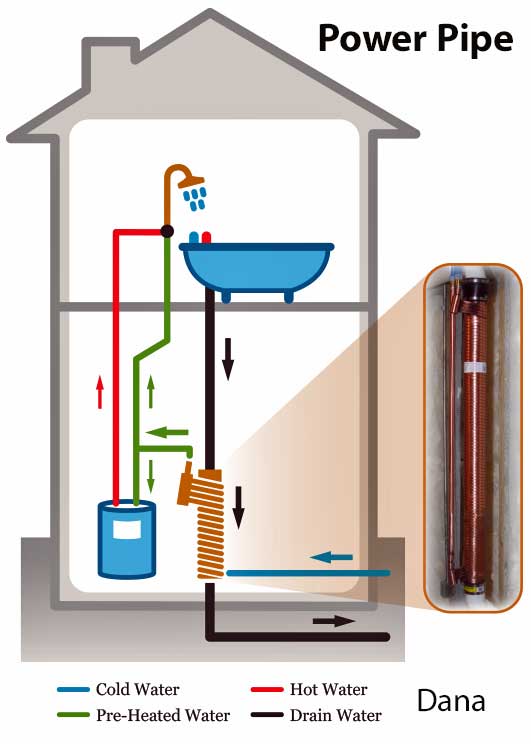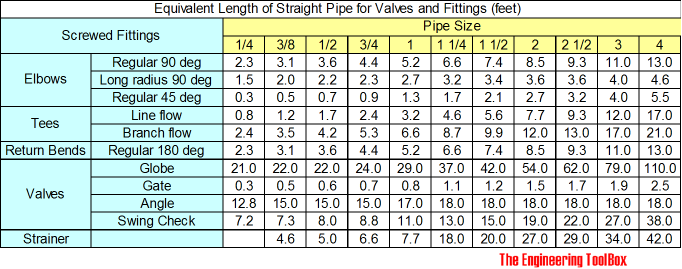Will Butler
New Member
Hi all,
I've done quite a bit of reading around here and other websites and would welcome feedback. I currently have a 50 gallon hot water tank for a family of 6. Plain and simple we are running out of hot water and are looking at three options. I would really like some feedback on options.
Current Information:
-50 gallon hot water heater
-Current hot water heater 11 years old
-Located in North Texas
-High pressure gas line 1" - From the 1" line it's cut down to 3/4" low pressure lines for all the gas appliances in the house. (see pics attached)
-Less than 10' from high pressure 1" gas line to hot water tank
1) Add another traditional hot water heater and run them together in parallel. I know this will work to nearly double our availability of hot water.
2) Go traditional tankless.
3) Go hybrid tankless.
Option 3 appeals to me most because of the availability to circulate hot water within the house and have instant hot wanter along with possibly endless hot water. Option 2 may work as well, but it appears not all vendors support a recirculation pump. I figure I need around 10-11GPM so two showers and another appliance can run at the same time along with figuring out the cold factor in winter months.
I'm looking at two hybrid vendors currently. Rinnai (RH180) and Westinghouse (WGRGHNG199).
Do I want condensing or non condensing?
Being a total newb at this and trying to learn before I purchase and have something installed that won't work properly, I want to educate myself ahead of time. Feedback is appreciated.
Thanks,
Will
I've done quite a bit of reading around here and other websites and would welcome feedback. I currently have a 50 gallon hot water tank for a family of 6. Plain and simple we are running out of hot water and are looking at three options. I would really like some feedback on options.
Current Information:
-50 gallon hot water heater
-Current hot water heater 11 years old
-Located in North Texas
-High pressure gas line 1" - From the 1" line it's cut down to 3/4" low pressure lines for all the gas appliances in the house. (see pics attached)
-Less than 10' from high pressure 1" gas line to hot water tank
1) Add another traditional hot water heater and run them together in parallel. I know this will work to nearly double our availability of hot water.
2) Go traditional tankless.
3) Go hybrid tankless.
Option 3 appeals to me most because of the availability to circulate hot water within the house and have instant hot wanter along with possibly endless hot water. Option 2 may work as well, but it appears not all vendors support a recirculation pump. I figure I need around 10-11GPM so two showers and another appliance can run at the same time along with figuring out the cold factor in winter months.
I'm looking at two hybrid vendors currently. Rinnai (RH180) and Westinghouse (WGRGHNG199).
Do I want condensing or non condensing?
Being a total newb at this and trying to learn before I purchase and have something installed that won't work properly, I want to educate myself ahead of time. Feedback is appreciated.
Thanks,
Will

